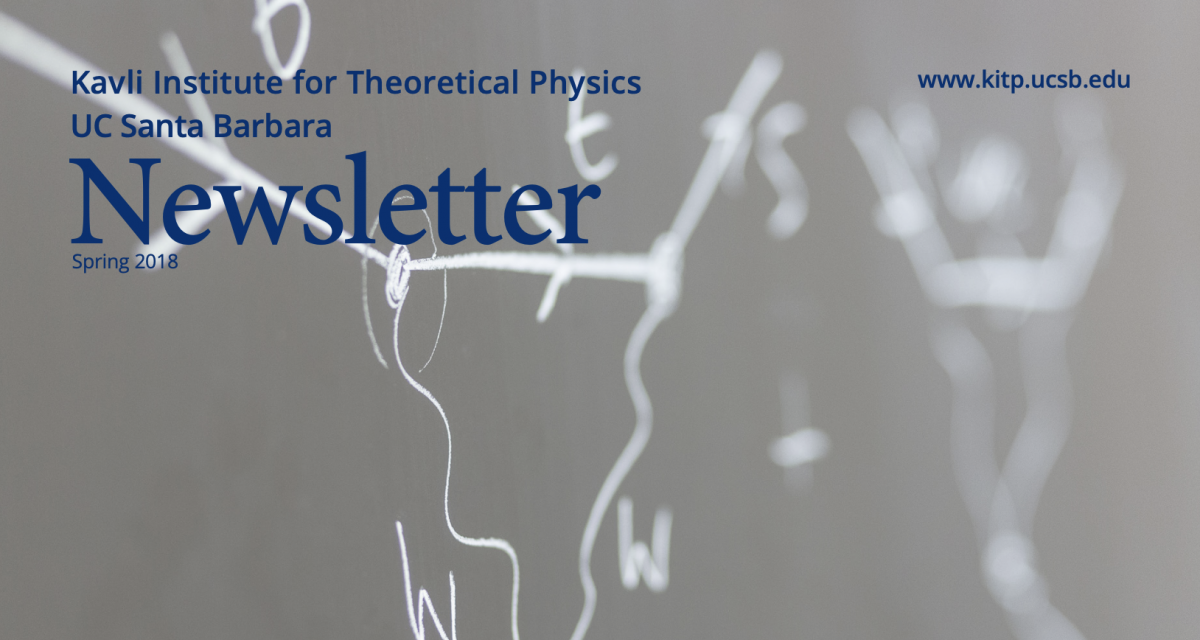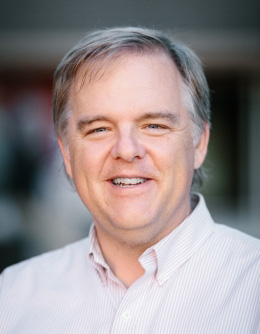
 Lars Bildsten.
Lars Bildsten.
Photo by Jakub Ostrowski.
I open this Newsletter with a heavy heart. Our good friend and colleague Joe Polchinski passed away in early February 2018. I’ve since had a chance to meet with his wife Dorothy and speak with her about Joe’s remarkable legacy across all of science. Much of what was special about Joe is nicely described by Eva Silverstein in her Quanta Magazine article. Eva and Quanta Magazine allowed us to excerpt much of that article here. Working with David Gross, Rob Leigh and Eva, KITP is organizing a Science Symposium in honor of Joe on December 15, 2018. Given Joe’s exceptional impact across all of physics and his remarkable mentoring of early career scientists, I’m sure it will be an exciting event. In the meanwhile, we are working with the University Archivist to ensure that Joe’s original calculations are preserved and cataloged for all to see.
On the science front, entanglement has become a large part of what physicists think about every day, especially when together at KITP. Permanent Member Leon Balents focused his inaugural lecture for the Pat and Joe Yzurdiaga Chair in Theoretical Physics on just this topic, as well as the physics of magnetism (see here). One of our recent visitors, Roger Melko, was kind enough to write (read here) about his experience as a visitor in 2015 when Alexei Kitaev (then KITP Permanent Member, now at Caltech) gave a series of talks that triggered an avalanche of new work exposing deep relations between phase transitions and the quantum structure of space-time. Science takes time to yield, as told in a story from Thomas Gasenzer about the germination of an idea while at KITP that has since been published in Science.
The tragedies of the Thomas Fire and the later debris flow in Montecito impacted many in our community. The smoke and ash from the Thomas Fire had an immediate impact on our December 2017 Rapid Response program on the double neutron star merger discovered by LIGO and VIRGO. I applaud KITP’s staff for their steadfast efforts during this period to keep the KITP functioning despite recurrent power outages, and the need to move all of the outdoor conference dining into Kohn Hall’s interior due to the poor air quality. This was a tough time for everyone, but the spirit of KITP allowed for the event to continue unabated. Read the article to get a sense for the exciting science enabled by this singular discovery of the electromagnetic signatures from the merger of two neutron stars!
The Montecito debris flow in the early morning of January 9, 2018 was only a few days after the arrival of a KITP program entitled: “The Physics of Dense Suspensions”. To a physicist, a dense suspension is a liquid (such as water) which has many small solid particles within it. The intellectual puzzle is to find the cause of the dramatic increase in the liquid’s viscosity as the concentration of the solids increases. What once flowed like water suddenly behaves more like molasses! This description is also very close to the mud that was present in the Montecito debris flow. One of the program participants, Douglas Jerolmack, a faculty member from University of Pennsylvania, became very involved in scientific diagnostic field work in Montecito with Professor Thomas Dunne of UCSB’s Bren School. Douglas described their work at the conclusion of his visit to KITP in a remarkable “Chalk Talk” that you can find on our website at: http://online.kitp.ucsb.edu/online/friends/jerolmack/
I noted in our last Newsletter that we were in the midst of our renewal of support from the National Science Foundation. We were renewed but at a substantially lower level than the prior grant. This decline in federal funding only highlights the continued need for philanthropy to support KITP’s mission. In that regard, we have added one staff member, Megan Turley, who will work with Kristi Newton and myself on development efforts, the Friends of KITP and other important outward looking activities. I look forward to introducing you to her at one of our next KITP events!
As of May 2018, we have been operating the Charles T. Munger Physics Residence for 16 months, and its impact continues to be felt across all of physics. Gerald Dunne, one of our Fall 2017 program coordinators, shared his perspective on the physics impact of the Munger Residence.
In closing, I also note the passing of Stephen Hawking, a long-time friend and supporter of KITP. Indeed, he gave the inaugural KITP Public Lecture many years ago, as described here.
~ Lars Bildsten, KITP Director
KITP Newsletter, Spring 2018
